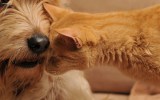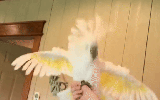
As well as talking up a storm, it turns out captive cockatoos have at least 30 different dance moves and are prone to head-banging, body rolls and sidestepping.
A study from researchers at Charles Sturt University, published in the PLOS One journal on Thursday, found the moves, of which 17 are newly identified, may be performed with or without music.
The study found that some cockatoos even had their own signature moves, unique to each individual, while other species appeared to favour different styles..
Researchers analysed 45 videos posted on social media that showed cockatoos (Cacatuidae) dancing.
They identified a total of 30 distinct dance movements — 17 of which had not previously been described scientifically.
The newly identified dance moves included head-banging, sidesteps and body rolls.
The researchers found that some birds also had their own unique dance moves, often by combining several movements in unique ways.

The researchers also investigated dancing behaviour in six cockatoos from three species housed at NSW’s Wagga Wagga Zoo.
The birds – two Major Mitchells, two sulphur-crested cockatoos and two galahs – experienced either silence, music or a podcast over a 20-minute period.
Lead researcher Natasha Lubke chose the playlist, using Avicii’s The Nights for the music and She’s on the Money for the podcast.
They found that all the birds performed dance moves, regardless of whether music was being played or not.
One particularly enthusiastic Major Mitchell had a total of 257 moves while listening to a 20-minute loop of The Nights.

The study reveals that dancing behaviour is present in at least 10 out of 21 species of cockatoo.
Dancing results from complex brain processes including imitation, learning and synchronised, rhythmic movement.
Spontaneous dancing in time to music has been reported only in humans and parrots, although some wild birds also display rhythmic movements as part of their courtship displays.
What motivates captive birds to dance remains unclear.
Cockatoos appear to display a wide repertoire of dance moves, many of which are similar to the courtship displays of wild parrots. This suggests that their dancing abilities may have originated as courtship behaviour that has been redirected towards their owners.
The authors said further research was needed to determine whether the birds enjoyed dancing and whether encouraging it could improve welfare for captive cockatoos.
“As well as supporting the presence of positive emotions in birds … the work suggests that playing music to parrots may provide a useful approach to enrich their lives in captivity, with positive effects on their welfare,” Lubke said.










